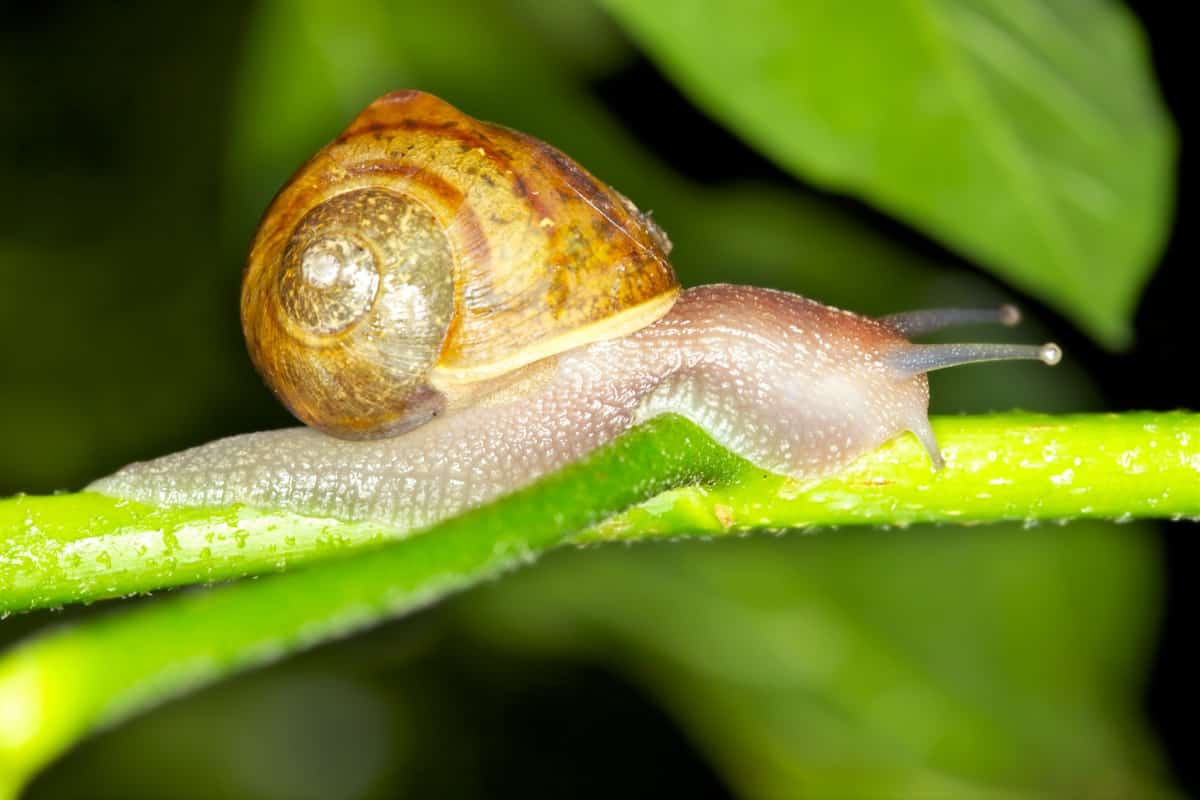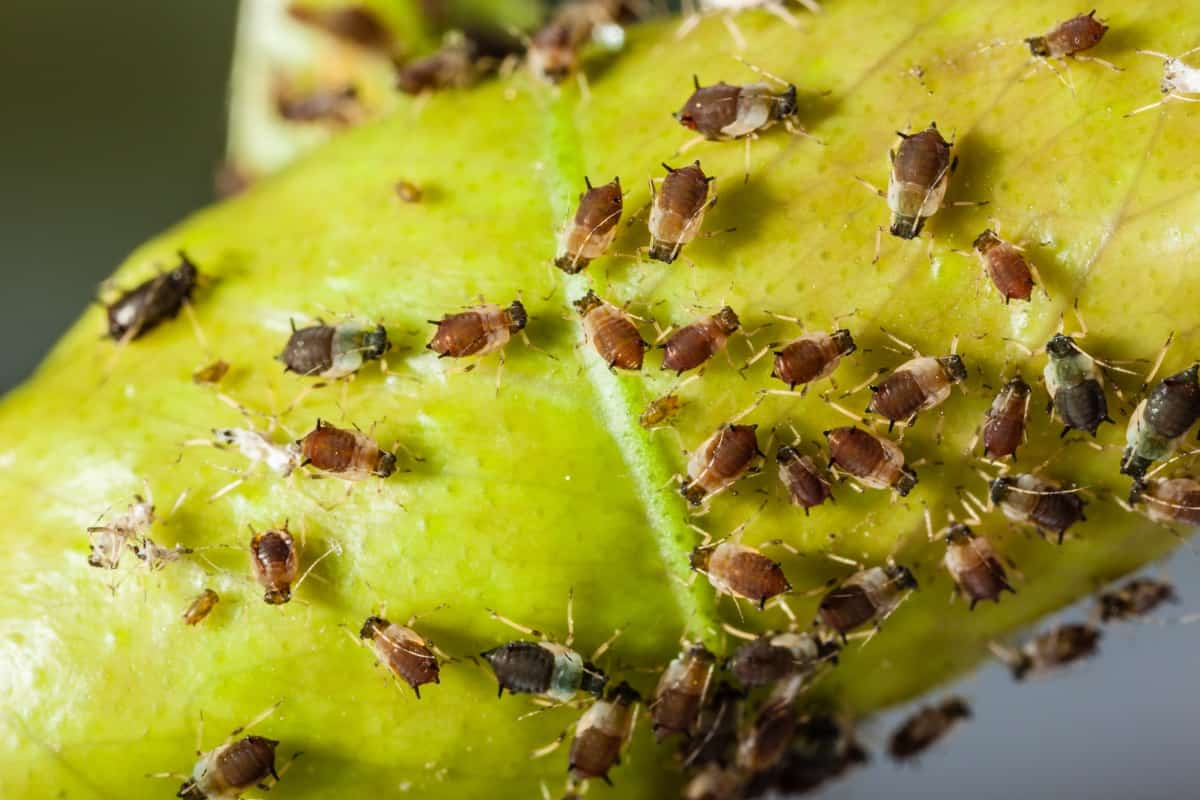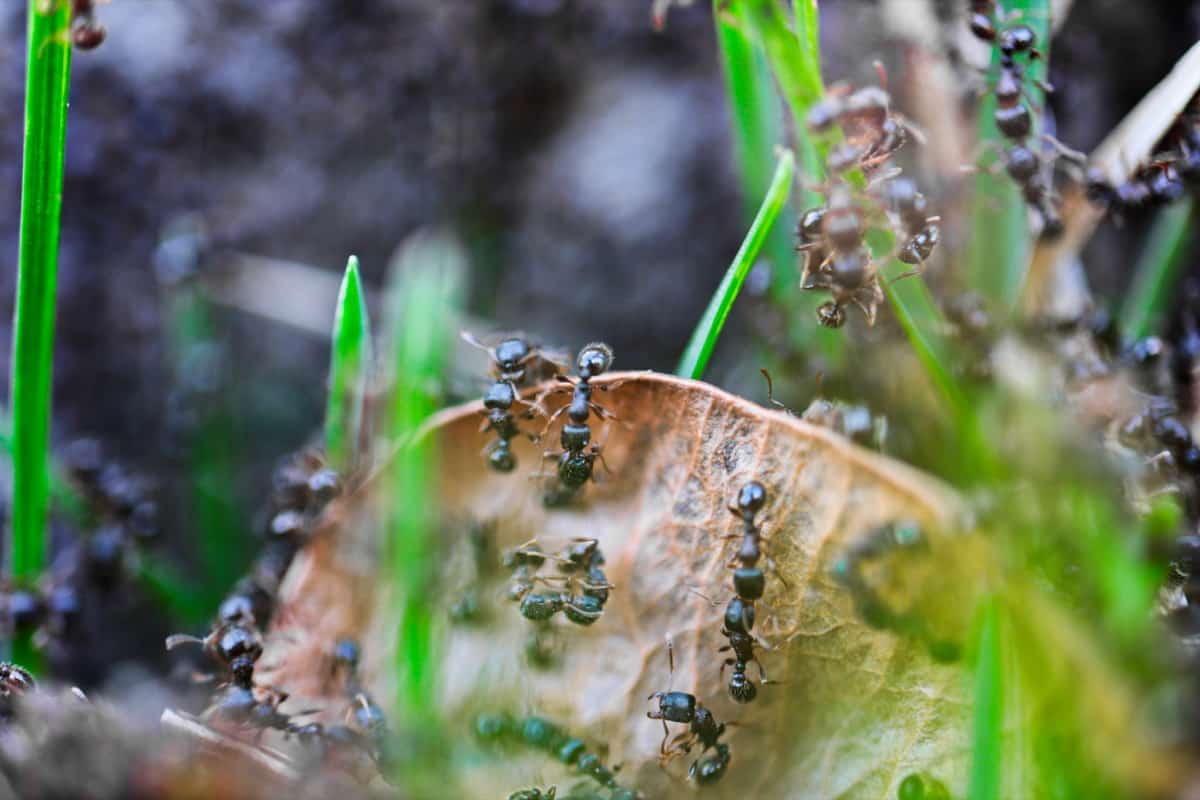Organic gardening has become increasingly popular in recent years, and for a good reason. Not only does it help create a healthier environment, but it also can provide us with home-grown produce free from any pesticides. Unfortunately, pests can still be a major problem when growing organic vegetables. Natural pest traps can be a great way to control pests in your organic garden.
There are many different options, so choose the best trap. You should remember when using natural pest traps to check them regularly and replace any damaged or ineffective ones. You can use many organic pest traps to keep your garden healthy and pest-free. These natural methods rely on the principles of ecology, which means understanding how nature works.
To set up a trap, identify the insect or pest you’re trying to catch. Many traps can control different pests, such as mosquitoes, flies, ants, centipedes, and spiders. Once you have identified the pest or insects you’re trying to catch, choose an appropriate trap based on the type of animal or insect you’re trapping. Let’s check out a few homemade bug traps that catch unwanted pests below.
Benefits of Using Natural Pest Traps
There are many benefits to using natural pest traps in an organic garden. These traps use natural enemies to control pests without harmful chemicals or pesticides. If you have an organic garden, you know that pests are a common problem. Many of the same pest problems in traditional gardens also occur in organic gardens, largely because conventional pesticides and herbicides damage both gardens. One way to combat pests is to use natural pest traps.
In case you missed it: Tips for Using Terracotta Pots in Your Garden: Benefits and Ideas for Beginners

The use of natural ingredients eliminates potential problems with toxicity or environmental impact. These traps can be used on a small scale or in large gardens and can be adapted to specific pests. They are easy to set up and maintain, making them a suitable choice for novice gardeners.
One of the biggest benefits of using traps is that they’re environmentally friendly. Not only does this mean that you’re reducing your environmental impact, but you’re also controlling pests without resorting to chemicals or other methods that may have negative consequences. Trapping is affordable when compared to other methods like spraying or using seeds.
Plus, since traps aren’t as reliant on pesticides or other chemicals, they tend to last longer than those options. This means you won’t have to replace them as often, which can save you money in the long run. Traps can be used for various purposes, including controlling pests in your garden and around your home perimeter. This means they can be incredibly useful if you have a specific problem that needs addressing.
How Do Natural Pest Traps Work?
Natural pest traps are a great way to help control pests in an organic garden. There are many different types of natural pest traps, so find the one best suited for your needs. Some traps use live or dead prey as a lure to capture pests. Other traps use physical or chemical stimuli to attract and capture pests. You can also make your trap using materials found in your garden.
Choose the trap that will work best for the pest you are trying to control. Once you have chosen the trap, set it up according to the instructions included with the trap. Check it regularly for signs of activity, such as flying bugs captured by the trap or dead prey left behind by attracted pests. If an infestation is present, using more than one trap may be necessary to control it effectively.
Homemade Bug Traps that Catch Unwanted Pests
Fruit Fly Pest Trap
Fruit flies are one of the most pesky pests that can ruin a perfectly good crop of fruits or vegetables. But a natural way to eliminate them is using a fruit fly pest trap. To make a fruit fly pest trap, you will need a small container like a mason jar or plastic cup, a piece of fruit that is starting to rot (overripe bananas work well), and some sugar water or apple cider vinegar. Cut the piece of fruit in half and place it inside the container.
In case you missed it: Cool-season Plants for Pollinators: Vegetables, Flowers, Fruits, Shrubs, and Herbs

Mix some sugar water or apple cider vinegar over the fruit. The liquid should cover the fruit completely. Place the lid on the container and poke some small holes in it. Set the trap near where you’ve seen fruit flies and wait for them to be attracted to the sweet smell of the rotting fruit. Once they come inside, they won’t be able to escape and will drown in the liquid. Empty the trap and dispose of the contents properly before making a new one as needed.
Snail and Slug Pest Trap
If you have snails or slugs in your garden, you can make a simple trap to help control them. All you need is a shallow bowl or dish and some bait. Snails and slugs are attracted to moisture, so a wet piece of fruit or vegetable will work well as bait. Place the dish in the garden near where you’ve seen the pests and check it every few days. When you see snails or slugs in the trap, remove them from your garden.
In case you missed it: How To Get Rid Of Slugs – In Plants in the Home Garden

Apple Codling Moth Trap
You can make an effective trap using a plastic bottle if you have a problem with codling moths in your organic apple trees. Cut the top off the soda bottle and invert it so that it fits tightly over the neck of the bottle. Make sure there are no gaps around the edges. Drill a few small holes in the bottom of the inverted bottle.
Fill the bottom half of the bottle with about an inch of apple cider vinegar. The codling moth larvae are attracted to the scent of apples and will crawl into the trap through the holes you drilled. They won’t be able to go back and will drown in the vinegar.
Aphid Trap
Aphids are tiny, sap-sucking pests that can wreak havoc on your garden plants. But there’s no need to reach for chemical insecticides; you can make your aphid trap with just a few household items. To make your trap, you’ll need a plastic container with a lid (a yogurt cup or margarine tub works well), some sweetened water or honey, and a piece of cardboard. In the center of the cardboard, cut a small hole, then place it over the top of the container so the hole is centered over the opening.
In case you missed it: 16 Best Plants That Naturally Repel Aphids: A Beginners Guide

Pour the sweetened water or honey into the container, and then place it in your garden where you’ve seen aphids. The insects will be attracted by the sweetness and crawl through the hole in the cardboard, but they won’t be able to fly back out again. You can dispose of them; however, you like crushing them by hand, drowning them in soapy water, or leaving them in the trap until they dehydrate and die.
Silverfish Trap
Silverfish are a common household pest that can be difficult to eliminate. They are attracted to moisture and can often be found in kitchens and bathrooms. One way to trap silverfish is to make a DIY silverfish trap. Cut a piece of cardboard into a small square or rectangle and cover it with duct tape. Then, poke small holes all over the tape. Place the trap where you have seen silverfish activity and check it every few days.
If you catch any silverfish, dispose of them immediately. Another way to keep silverfish out of your home is to create an indoor environment that is less hospitable for them. Silverfish prefer dark, damp places, so try to keep your home as dry and well-ventilated as possible. Additionally, declutter your home, so they have fewer places to hide. Finally, vacuum regularly and seal up any cracks or crevices where they could potentially enter your home.
Cucumber Beetle Trap
To make a cucumber beetle trap, mix 1 cup of water, one tablespoon of sugar, and one teaspoon of yeast. Then, cut a 2-liter soda bottle in half and invert the top half, so it fits snugly inside the bottom half. Next, poke several small holes in the bottom of the inverted top half for the beetles to enter.
Finally, pour your mixture into the bottom half of the bottle and screw on the lid with the top half inverted inside. Place your trap near your plants and check it every few days to see if you’ve caught any cucumber beetles. If so, remove them from the trap and release them far away from your garden.
Ant Trap
Many natural pest traps are used in gardeners’ arsenals, but one of the most popular is the ant trap. This simple device consists of a small cup or saucer filled with sugar, drenched in vinegar, and placed beside the path where ants tend to travel. The ants enter the cup to get to the food source inside, then fall into the vinegar, killing them.
In case you missed it: 12 Plants that Repel Ants to Include in Your Garden

Cutworm Trap
If you’re an organic gardener, chances are you’ve dealt with cutworms at some point. These pesky little insects can wreak havoc on your plants, and they’re difficult to get rid of once they’ve infested your garden. Luckily, there is a natural way to trap and kill cutworms using materials you probably already have around the house. Find a container at least four inches deep to make a cutworm trap.
A milk jug or yogurt cup will work perfectly. Cut a hole in the lid that is just big enough for a cutworm to fit through. Next, fill the container with about an inch of water and set it upside down in your garden so the hole faces up. The cutworms will be attracted to the hole in the lid and will crawl inside, looking for food. Once they fall into the water, they will drown. You can empty the trap every few days and dispose of the cutworms in the compost pile.
Caterpillar Trap
If you have a caterpillar problem in your garden, you can make a simple trap to help control them. All you need is a plastic container with a lid, straw, and bait. Cut a hole in the container’s lid that is big enough for the caterpillars to crawl through but not so big that they can escape.
In case you missed it: Top 14 Beautiful Silver Leaf Plants to Complement Your Garden

Stuff the straw into the container, and then add your bait. Some good options for bait include overripe fruit, vegetables, or meat. The caterpillars will be attracted to the bait and crawl into the container, where they will be trapped. Check the trap regularly and remove any caterpillars you find.
Mealybug and Scale Insect Trap
If you have a problem with mealybugs or scale insects in your organic garden, you can make a simple trap to help control them. You need a piece of cardboard, a paper towel, and petroleum jelly. Cover the cardboard or paper towel with a layer of petroleum jelly to make the trap. Then put it in an area where you’ve seen mealybugs or scale insects.
The pests will be attracted to the petroleum jelly, and when they crawl into the trap, they’ll get stuck and won’t escape. You can dispose of the traps as needed, and they should help to reduce the population of mealybugs or scale insects in your garden.
Conclusion
As an organic gardener, it’s important to use eco-friendly methods when removing pests from your garden. Many traps can be used in an organic garden, so it’s important to research which ones are best for your situation. By using a variety of natural pest traps, you will be able to remove pests while minimizing damage to your environment effectively.
- Flower Garden Designs and Layouts for Beginners
- Planting and Spacing Techniques in Papaya: A Beginner’s Guide
- Growing Gold: Essential Techniques for Planting Pineapples
- How to Make Kalanchoe Plant Bushy: Home Remedies and Solutions
- 11 Reasons Why Your Gardenia is Not Blooming: Home Remedies and Solutions
- Eco Elegance: The Guide to Designing a Drought-Tolerant Landscape
- Gardening on a Slope: Strategies for Hillside Landscaping
- Nourish and Flourish: Top Organic Mulches for Thriving House Plants
- Everything You Want to Know about Indian Mogra Flower: Discover Uses and Growing
- Green Thumb Success: Expert Tips for Cultivating Greenhouse Pumpkins All Year Round
- Maximize Growth & Flavor: The Ultimate Guide to Companion Planting in Herb Gardens
- How to Control Rhododendron Problems Naturally: Home Remedies and Organic Ways to Fix Them
- Natural Magic: The Remarkable Benefits of Cinnamon for Plants
- Best Steps to Revive Dying Tulip with Natural and Organic Treatment
- 10 Reasons Why Your Angel Trumpet is Not Blooming: Remedies and Treatment
- How to Fix Periwinkle Leaf and Flower-Related Problems: Natural Remedies and Solutions
- How to Fix Zinnias Leaf and Flower Problems: Discover Natural and Home Remedies
- Organic Steps to Induce Lemon Tree Flowers: A Comprehensive Guide
- Bloom Booster: Crafting the Perfect Homemade Bougainvillea Fertilizer
- Optimizing Growth: A Guide to Applying NPK Fertilizer for Potted Plants
- 10 Best Homemade Fertilizers for Rubber Plant: DIY Recipes and Application Method
- How to Boost Female Pumpkin Flowers: Effective Steps for More Flowers and High Yields
- Transform Your Indoor Garden: Top Benefits of Pink Salt for Houseplants
- 10 Best Homemade Fertilizers for Peacock Plants (Calathea): Easy DIY Guide
- Unlock Blooms: 9 Reasons Why Your Potted Chrysanthemum is Not Blooming
- 8 Reasons Why Your Potted Hibiscus is Not Blooming: Fix it with Simple Solutions
- Unlock Blooms: 9 Key Reasons Your Potted Frangipani Won’t Flower
- 10 Reasons Why Is My Ice Plant Not Blooming: Remedies and Treatment
- 10 Reasons Why My Potted Hydrangea Not Blooming: Treatment and Remedies
- 10 Reasons Why is My Wisteria Not Blooming: Remedies and Treatment
- 10 Reasons Why is My Goldfish Plant Not Blooming: Remedies and Treatment
- Maximize Your Space: Ultimate Guide to Balcony Gardening with Grow Bags
- 10 Reasons Why Your Iris is Not Blooming: Remedies and Treatment
- 10 Reasons Why Your Anthurium Plant is Not Blooming: Treatment and Remedies
- 10 Reasons Why Your Aquaponic Plants Are Not Flowering: Remedies and Treatment
- 10 Reasons Why Your Agapanthus is Not Flowering: Remedies and Treatment